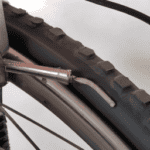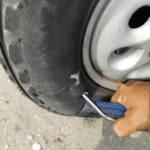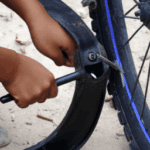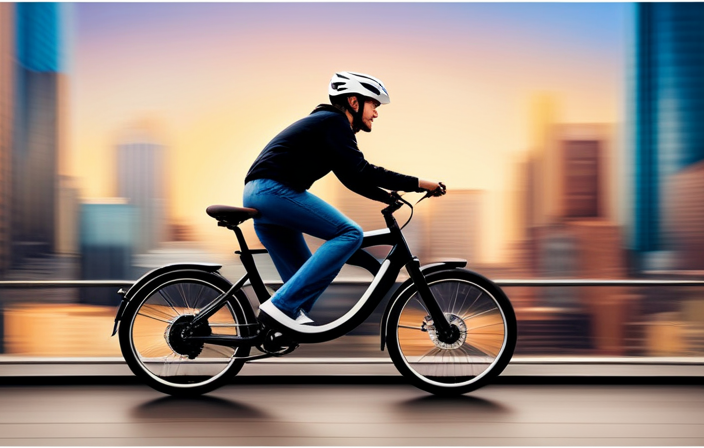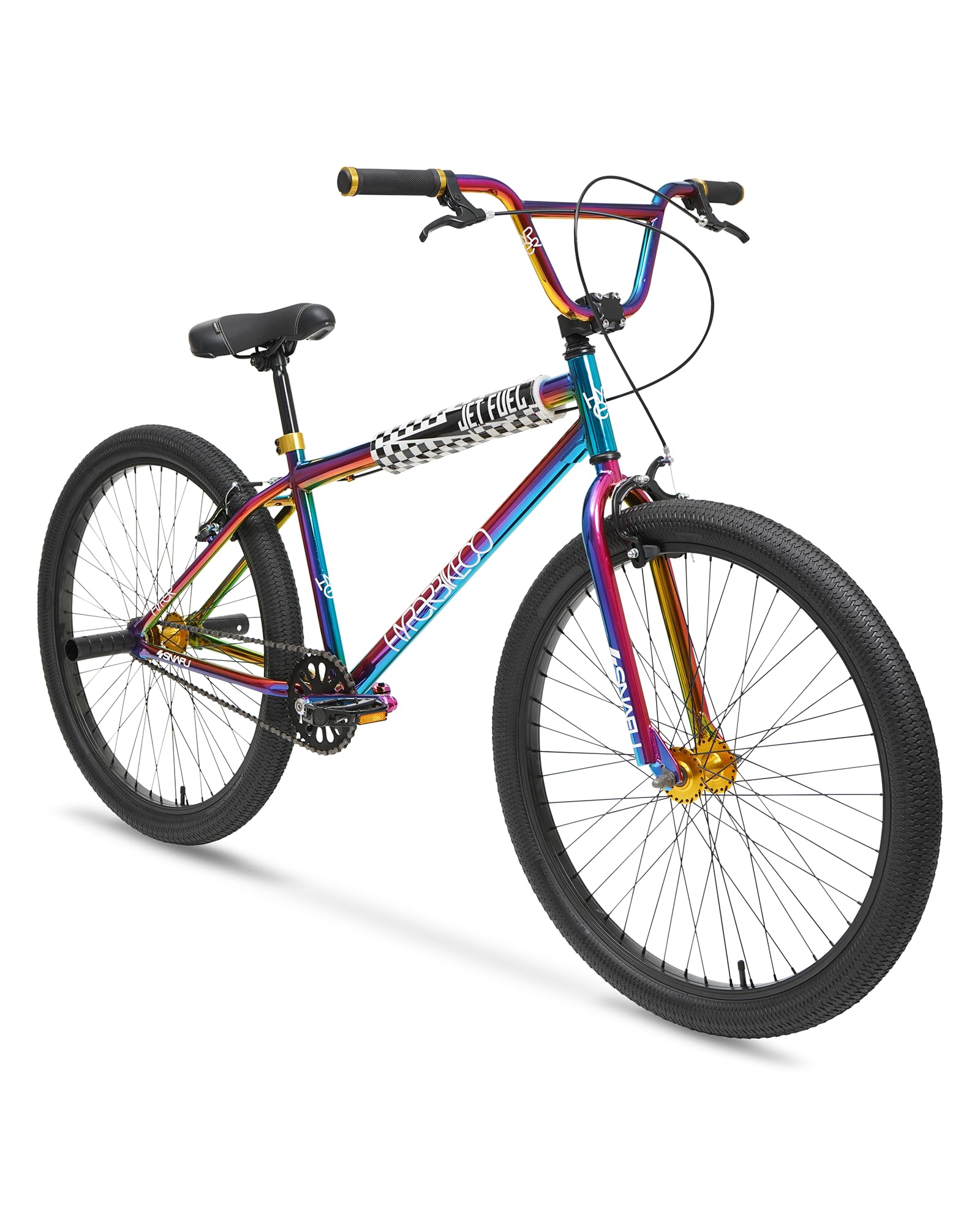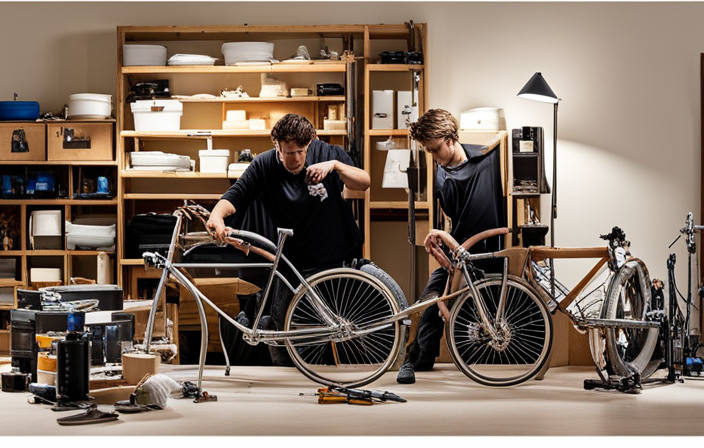Bike
How To Repair Bicycle Tire
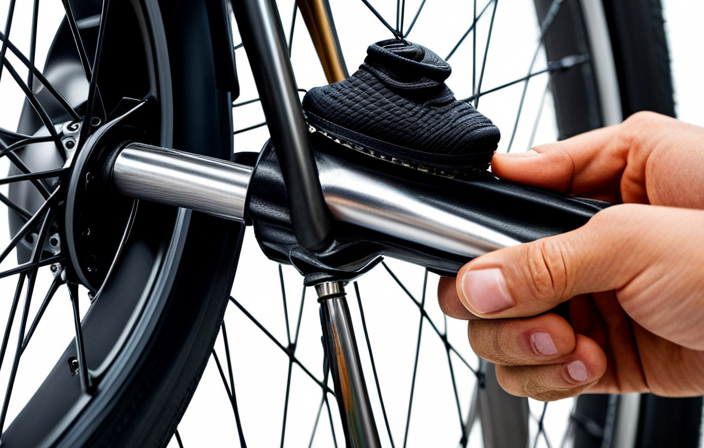
Repairing a bicycle tire may seem like a daunting task, but with the right tools and knowledge, it can be a straightforward process. In this guide, I will walk you through the steps to fix a flat tire and get you back on the road in no time.
From removing the wheel to patching or replacing the inner tube, I will provide detailed instructions and tips to ensure a successful repair.
So, let’s dive in and learn how to repair a bicycle tire like a pro.
Key Takeaways
- Having a tire repair kit with tire levers, patch kit, pump, and extra inner tubes is essential for bicycle tire repair.
- When removing the wheel from the bicycle, remember to shift the chain onto the smallest front chainring and rear cog, open the quick-release lever, and lift the bike off the ground to gently pull out the wheel.
- To locate the source of a flat tire, check for visible punctures or objects stuck in the tire, inspect the tire surface for sharp objects, listen for a hissing sound, and consider using tire sealant for small, hard-to-detect punctures.
- When patching or replacing the inner tube, deflate the tire, remove the wheel, locate the puncture, roughen the area around it, apply rubber cement, and firmly place the patch over the puncture.
Gather Your Tools and Materials
You’ll need to gather your tools and materials to repair your bicycle tire. Proper tire maintenance is crucial for the longevity and performance of your bike.
It’s important to have a tire repair kit on hand, as it will contain all the necessary tools for the job. This kit typically includes tire levers, a patch kit, a pump, and extra inner tubes.
Tire levers are used to remove the tire from the rim, allowing access to the inner tube. The patch kit contains patches, adhesive, and sandpaper for repairing punctures. A pump is essential for reinflating the tire once it’s been fixed.
Having these tools readily available ensures that you are prepared for any tire repair situation.
Now, let’s move on to the next step, which is removing the wheel from the bicycle.
Remove the Wheel from the Bicycle
To remove the wheel from your bike, simply release the quick-release lever. Here is a step-by-step guide on how to properly remove and reinstall a bicycle wheel:
- Start by shifting the chain onto the smallest front chainring and the smallest rear cog.
- Open the quick-release lever by flipping it to the open position and loosen the tension on the brake by squeezing the brake arms together.
- Lift the bike off the ground and gently pull the wheel out of the dropouts.
Common mistakes to avoid when removing a bicycle wheel include forgetting to shift the chain into the correct gear and not fully opening the quick-release lever. These mistakes can make it difficult to remove the wheel and may cause damage to the bike.
Now that you have successfully removed the wheel, let’s move on to the next step: locating the source of the flat.
Locate the Source of the Flat
First, check for any visible punctures or objects stuck in your flat tire. Carefully inspect the tire surface for any sharp objects such as thorns or glass shards that may have caused the puncture.
If you are unable to locate the source visually, you can also try listening for a hissing sound, which indicates the location of the puncture. In some cases, the puncture may be too small to detect with the naked eye, and this is where tire sealant comes in handy.
Tire sealant can be injected into the inner tube, and as you rotate the wheel, it will spread and seal any small punctures.
Once you have located the puncture or used tire sealant, you can proceed to the next section on how to patch or replace the inner tube.
Patch or Replace the Inner Tube
Once you’ve determined the location of the puncture or used tire sealant, you can proceed to patch or replace the inner tube. When deciding whether to repair or replace the inner tube, consider the severity and number of punctures. If the puncture is small and there are no other issues, a patch can be a cost-effective solution. However, if the tube has multiple punctures or is severely damaged, it’s best to replace it entirely. Here is a step-by-step guide to patching or replacing the inner tube:
| Step | Patching | Replacing |
|---|---|---|
| 1 | Deflate the tire and remove the wheel. | Deflate the tire and remove the wheel. |
| 2 | Locate the puncture and mark it. | Inspect the tube and tire for any damage. |
| 3 | Roughen the area around the puncture. | Insert a new inner tube into the tire. |
| 4 | Apply rubber cement to the area. | Inflate the tire and check for proper seating. |
| 5 | Place the patch over the puncture and press firmly. | Reinstall the wheel onto the bike. |
| 6 | Inflate the tube and check for leaks. | Inflate the tube and check for leaks. |
After patching or replacing the inner tube, it’s important to check the tire for any damage, such as cuts or tears. This will ensure a safe and effective repair.
Check the Tire for Damage
After patching or replacing the inner tube, it’s crucial to inspect the tire for any signs of damage. Checking the tire thoroughly ensures that you don’t encounter any unexpected issues while cycling. Here are some key steps to follow when checking for tire damage:
- Look for cuts or punctures on the tire surface.
- Examine the sidewalls for any cracks or bulges.
- Check the tread for excessive wear or bald spots.
- Run your fingers along the inside of the tire to feel for any foreign objects lodged in it.
- Inspect the valve stem for any damage or leaks.
By examining your tire for damage, you can identify any potential problems and prevent further issues while riding. Once you’re confident the tire is in good condition, you can proceed to reinstall the inner tube and tire onto the wheel.
Reinstall the Inner Tube and Tire onto the Wheel
After carefully inspecting the tire for any signs of damage, it’s time to move on to the next step in repairing a bicycle tire: reinstalling the inner tube and tire onto the wheel. This process requires precision and attention to detail to ensure a secure fit.
To begin, I start by aligning the valve of the inner tube with the valve hole on the rim. Then, I gently insert the rest of the inner tube into the tire, making sure it sits evenly inside without any twists or folds. Once the inner tube is properly positioned, I begin mounting the tire onto the rim, starting opposite the valve and working my way around.
Using my hands or tire levers if necessary, I carefully push the tire into place, ensuring that the bead of the tire is fully seated on the rim. This step may require some effort, but it is crucial for preventing any potential pinch flats.
Now that the inner tube and tire are securely in place, we can move on to the next stage: inflating the tire and checking for leaks.
Inflate the Tire and Check for Leaks
Now it’s time to pump up the tire and make sure there are no leaks. Start by checking the tire pressure using a pressure gauge. Inflate the tire to the recommended pressure level, which is usually indicated on the side of the tire.
Once the tire is fully inflated, inspect it carefully for any signs of leaks or punctures. If you notice any leaks, you can use a tire sealant to patch them up. Apply the sealant according to the manufacturer’s instructions and give it some time to dry.
Afterward, check the tire again to ensure that the leaks have been effectively sealed. With the tire properly inflated and leak-free, we can now move on to the next step of reattaching the wheel to the bicycle.
Reattach the Wheel to the Bicycle
To reattach the wheel, make sure the bolts are aligned with the holes on the frame and tighten them securely. Ensuring a secure attachment is crucial to maintaining stability and safety while riding.
Once the bolts are aligned, use a wrench to tighten them firmly, but be careful not to overtighten, as this can damage the frame or the bolts themselves.
Additionally, it is important to align the brakes properly after reattaching the wheel. Ensure that the brake pads are positioned correctly on the rim, allowing for effective braking.
Once the wheel is securely attached and the brakes are properly aligned, you can move on to the next step of testing the repaired tire.
Test the Repaired Tire
You can check if the tire has been successfully repaired by giving it a test ride. Here are a few things to keep in mind during your test ride:
-
Proper tire pressure for optimal performance: Make sure the repaired tire is inflated to the recommended pressure. This will ensure smooth and efficient riding.
-
Different types of tire repair kits and their effectiveness: Depending on the type of puncture, different repair kits may be used. It’s important to choose the right kit for the job to ensure a long-lasting repair.
-
Pay attention to the ride quality: During your test ride, observe if the tire feels stable and if there are any unusual vibrations. This will help you determine if the repair has been successful.
By following these steps, you can ensure that your repaired tire is in good condition.
Now, let’s move on to some tips for preventing future flat tires.
Tips for Preventing Future Flat Tires
To prevent future flat tires, it’s important to regularly check and maintain the optimal tire pressure. This is one of the most effective preventive measures you can take. Maintaining the right tire pressure ensures that your tires are properly inflated, reducing the risk of punctures and flats. Additionally, it improves the performance and handling of your bicycle.
Here are some maintenance techniques to help you prevent flat tires:
- Inspect your tires regularly for any signs of wear and tear, such as cuts, cracks, or bulges. Replace worn-out tires immediately.
- Use tire liners or puncture-resistant tubes to provide an extra layer of protection against sharp objects on the road.
- Avoid riding over debris, glass, or other sharp objects whenever possible.
- Keep your tires clean and free from debris by regularly wiping them down with a damp cloth.
By following these preventive measures and maintenance techniques, you can greatly reduce the chances of experiencing future flat tires.
Frequently Asked Questions
How long does it typically take to repair a bicycle tire?
Repairing a bicycle tire typically takes around 15-30 minutes depending on the extent of the damage. Common causes of bicycle tire damage include punctures from sharp objects, worn-out treads, and improper inflation.
Can I use a patch kit to repair a large hole in the inner tube?
Absolutely! Patch kits are a fantastic fix for large holes in inner tubes. They provide a reliable and affordable alternative to replacing the entire tube. Follow the instructions carefully for a successful repair.
Are there any specific tools I need to remove the wheel from the bicycle?
To remove the wheel from the bicycle, you will need a few necessary tools. These include a wrench or Allen key to loosen the bolts securing the wheel to the frame, and possibly a quick-release lever if your bike has one.
How often should I check my bicycle tires for damage?
It’s always better to be safe than sorry. Regularly check your bicycle tires for damage, as prevention is key. Look out for signs such as cuts, bulges, or worn tread. Don’t ignore these warnings!
Is it necessary to replace the inner tube every time I get a flat tire?
No, it is not necessary to replace the inner tube every time you get a flat tire. There are alternative repair methods such as patching the tube. This can save you money and extend the life of the inner tube.
Conclusion
In conclusion, repairing a bicycle tire may seem like a daunting task, but with the right tools and a little know-how, it can be a breeze. By following the steps outlined in this article, you can quickly and effectively fix a flat tire and get back on the road in no time.
Remember, ‘an ounce of prevention is worth a pound of cure,’ so take the necessary steps to prevent future flat tires. This includes regularly checking your tire pressure and avoiding sharp objects on your rides.
Happy cycling!
Bike
Where Can I Sell My Bicycle For Cash Near Me

Are you interested in selling your bike to earn some fast money? You’re not alone. Numerous individuals are searching for a convenient and trustworthy method to exchange their bicycles for cash.
Fortunately, there are several options available that can help you achieve just that. In this article, I will explore various avenues where you can sell your bicycle for cash near you.
From online platforms like Craigslist and Facebook Marketplace to local bike shops and classified ads, we will explore the most effective methods to help you find the best buyer for your bike.
Key Takeaways
- Auctions and estate sales can be a good option for selling bicycles and getting cash quickly.
- Bicycle consignment shops offer a convenient way to sell your bicycle and receive cash in return.
- Local flea markets or swap meets provide an opportunity to sell your bicycle for cash and connect with potential buyers in your community.
- Bike expos or events are a great way to showcase and sell your bicycle to a targeted audience, often resulting in a quick cash sale.
Online Platforms: Craigslist
You can easily sell your bicycle for cash near you by posting an ad on Craigslist. One of the selling strategies you can employ on this online platform is negotiating prices. You can set an initial price for your bicycle and then be open to negotiating with potential buyers. This can help you get the best deal while also ensuring that the buyer feels they are getting a fair price.
Another important aspect of selling on Craigslist is ensuring safety. It is recommended to meet potential buyers in public places, such as a local coffee shop or park, to make the transaction. By following these strategies and taking safety precautions, you can successfully sell your bicycle on Craigslist.
Moving on to another online platform for selling, let’s talk about the Facebook Marketplace.
Online Platforms: Facebook Marketplace
Facebook Marketplace is a great online platform to find potential buyers for your bike. When selling on Facebook Marketplace, it’s important to prioritize your online safety. Start by setting up a separate email address and avoid sharing personal information. Meet potential buyers in a public place during daylight hours and consider bringing a friend along for added security. Additionally, only accept cash payments and be cautious of any suspicious requests or offers.
As for determining the right price for your bicycle, do some research to see what similar bikes are selling for. Take into account the condition, brand, and age of your bike. Remember to be realistic and open to negotiation.
Moving on to the next section about local bike shops, they can also be a great option for selling your bicycle, providing a different avenue for potential buyers to find your bike.
Local Bike Shops
Consider checking out local bike shops as they can provide another option for finding potential buyers for your bike.
Many local bike shops offer bike repair services and have a solid customer base who are interested in purchasing used bicycles. They may even have a bulletin board or a designated space where you can advertise your bike for sale.
Additionally, some bike shops also offer bike rental options, which means they have a constant stream of customers who are passionate about cycling. This could increase your chances of finding a buyer quickly.
After exploring local bike shops, you can also explore classified ads in local newspapers, where you can reach a wider audience of potential buyers.
Classified Ads in Local Newspapers
Looking for a quick and effective way to reach a wider audience of potential buyers for your bike? Check out the classified ads in local newspapers. This traditional method of advertising can still be a highly effective way to sell your bicycle for cash.
Here are some reasons why:
- Online classifieds like Gumtree and OLX allow you to post ads for free and reach a large number of potential buyers in your local area.
- Local community boards, such as bulletin boards and grocery store notice boards, are often frequented by people looking for used items, including bicycles.
By utilizing these resources, you can increase your chances of finding a buyer quickly and easily.
Next, let’s explore another option for selling your bicycle: online bicycle marketplaces like eBay.
Online Bicycle Marketplaces: eBay
If you want to reach a wider audience of potential buyers for your bike, eBay is a great online marketplace to explore. On eBay, you can list your bicycle for sale and connect with buyers from all over the world. One of the advantages of selling on eBay is the opportunity for price negotiation. Buyers can make offers on your bike, allowing you to potentially get the best deal for your sale. Additionally, when selling on online marketplaces like eBay, it’s important to consider shipping and packaging. To securely ship your bicycle to buyers, make sure to disassemble and package it properly, using bubble wrap and sturdy boxes. This will help protect your bike during transit. Transitioning into the next section, let’s explore another online bicycle marketplace: BicycleBlueBook.
Online Bicycle Marketplaces: BicycleBlueBook
BicycleBlueBook offers a convenient platform for cyclists to evaluate the value of their bikes before listing them for sale. With their easy-to-use online tool, you can enter your bike’s make, model, and condition to receive an accurate estimate of its worth.
Here are some pricing strategies to help you maximize the value of your used bicycle:
- Clean and tune-up your bike before listing it
- Take high-quality photos that showcase its features
- Include detailed specifications and any upgrades or accessories
- Set a competitive price based on the BicycleBlueBook valuation
When selling your bicycle online, negotiating the best deal is crucial. Here are some tips to help you get the most out of your sale:
- Highlight the bike’s unique selling points
- Respond promptly to inquiries and be open to negotiation
- Consider offering free shipping or local pickup options
- Be willing to compromise on price if necessary
Transitioning into the subsequent section about community garage sales, it’s also worth exploring alternative options for selling your bicycle.
Community Garage Sales
Community garage sales can be a great opportunity to offload your bike and make some extra money. These events are often organized by local community outreach programs or neighborhood initiatives, bringing together residents who are looking to sell their unwanted items. Participating in a community garage sale not only allows you to sell your bicycle for cash, but it also gives you a chance to interact with your neighbors and contribute to the community.
You can advertise your bike at the event, display it prominently, and negotiate prices with potential buyers. However, if you’re looking for a more targeted approach, local buy/sell/trade Facebook groups can be a great option to explore. These online communities allow you to connect with potential buyers who are specifically interested in purchasing bicycles.
Local Buy/Sell/Trade Facebook Groups
Check out local buy/sell/trade Facebook groups to connect with potential buyers who are specifically interested in purchasing bikes. These groups are a great way to reach a local audience and sell your bicycle for cash quickly. Many communities have dedicated buy/sell/trade groups where members can post items they want to sell or buy. By joining these groups, you can easily find individuals who are actively searching for bikes to purchase. Additionally, you can also explore online classifieds platforms to expand your reach beyond just Facebook groups. These platforms allow you to list your bicycle for sale and connect with interested buyers in your area. Selling your bicycle through local meetup groups and online classifieds is a convenient and effective way to find buyers who are eager to purchase your bike. Next, let’s explore another option for selling your bicycle: local auctions or estate sales.
Local Auctions or Estate Sales
Explore local auctions or estate sales in your area as a potential avenue for finding buyers interested in purchasing your bike. These events often attract a diverse range of people looking for unique items, including bicycles. Local flea markets and community garage sales are also worth considering, as they can attract individuals who are specifically interested in buying used items.
Attending these events allows you to showcase your bike to a wide audience and potentially find a buyer who appreciates its value. Keep in mind that when selling at auctions or estate sales, you may need to set a minimum price or be prepared to negotiate with potential buyers.
Once you have exhausted these options, you can transition into exploring bicycle consignment shops, which offer another avenue for selling your bike while bypassing the hassle of organizing your own sale.
Bicycle Consignment Shops
Consider taking your bike to a consignment shop where they can help you find a buyer. These shops specialize in selling used bicycles and have a network of potential buyers. Additionally, they often offer bicycle repair services, ensuring that your bike is in top condition before being sold.
To give you an idea of the potential benefits, here is a comparison of renting vs. buying a bicycle:
| Renting a Bicycle | Buying a Bicycle |
|---|---|
| Convenient for short-term use | Cost-effective in the long run |
| No maintenance required | Requires regular maintenance |
| Limited selection | Wide range of options available |
| May not have the best quality | Can choose a bike that suits your preferences |
After considering consignment shops, you can explore other options such as local flea markets or swap meets where you can sell your bike.
Local Flea Markets or Swap Meets
If you’re looking to offload your bike, local flea markets or swap meets are great places to connect with potential buyers. These events often attract a diverse crowd of bike enthusiasts and bargain hunters, giving you a good chance to sell your bicycle for cash.
Here are three reasons why you should consider selling your bike at a local flea market or swap meet:
-
Exposure to a wide audience: Flea markets and swap meets attract a variety of people, including individuals who may be interested in buying a bike. This gives you the opportunity to showcase your bicycle to a larger audience than you might find elsewhere.
-
Local bike rental services: Some flea markets or swap meets may have nearby bike rental services. This can attract visitors who are already interested in biking and may be looking to purchase their own bike.
-
Online classified websites: Many flea markets and swap meets have an online presence, allowing you to advertise your bike on their website or social media platforms. This can help generate additional interest and potential buyers.
When considering where to sell your bicycle for cash, flea markets and swap meets offer a great opportunity to connect with buyers. However, another avenue to consider is bike expos or events.
Bike Expos or Events
Bike expos or events are great opportunities to showcase your bike to a wide range of potential buyers. These events bring together cycling enthusiasts, bike racers, and even bike repair shops, creating a perfect environment for selling your bicycle.
At bike expos, you can set up a booth or display your bike for people to see and test ride. This allows interested buyers to get a firsthand experience of your bike’s performance and condition. Additionally, bike expos often attract a large number of attendees, increasing the chances of finding a buyer quickly.
If you’re unable to sell your bike at a bike expo, the next step would be to explore other options, such as local pawn shops, where you might be able to get cash for your bicycle.
Local Pawn Shops
When looking to sell your bike, you might want to check out local pawn shops as they can offer a convenient option for getting rid of your bicycle. Local pawn shops are known for buying and selling used items, including bicycles. They can provide a quick and hassle-free way to sell your bike for cash near you. To give you an idea of what to expect, here is a comparison table showcasing the pros and cons of selling your bike at local pawn shops versus other alternative selling methods:
| Local Pawn Shops | Online Marketplaces |
|---|---|
| Quick cash | Wider audience |
| Convenient | Potential for higher price |
| Limited negotiation | Shipping and handling |
While pawn shops offer immediate cash and convenience, online marketplaces may provide a larger customer base and the possibility of a higher selling price. If you’re not interested in selling your bike, the next section will discuss bicycle donation programs as an alternative option.
Bicycle Donation Programs
Consider exploring bicycle donation programs as a great alternative option for getting rid of your bike and making a positive impact in your community. Donating your bicycle to a local bicycle donation program has several benefits.
- Help those in need: By donating your bicycle, you can provide transportation to someone who may not be able to afford it otherwise.
- Environmental impact: By keeping your bike out of the landfill, you contribute to reducing waste and promoting sustainability.
- Tax deductions: Some bicycle donation programs offer tax deductions for your charitable contribution, allowing you to save money.
- Support local bike repair services: Many bicycle donation programs partner with local bike repair services, helping them provide employment and support their business.
Once you have considered donating your bicycle, you can also explore word-of-mouth and networking with friends and family to find potential buyers. Transitioning into the next section, this method can be an effective way to sell your bicycle quickly and easily.
Word-of-Mouth and Networking with Friends and Family
One effective way to quickly and easily find potential buyers for your bicycle is through word-of-mouth and networking with friends and family. Start by letting your close circle know that you are selling your bicycle and ask them to spread the word.
Word-of-mouth recommendations can be incredibly powerful, as people trust the opinions and suggestions of those they know.
Additionally, consider leveraging social media platforms to reach a wider audience. Post about your bicycle for sale on your personal profiles and ask your friends to share the post. You can also join local buy-and-sell groups or bicycle enthusiast groups in your area to connect with potential buyers.
By tapping into your network and utilizing social media, you increase your chances of finding a buyer quickly and easily.
Frequently Asked Questions
How do I determine the value of my bicycle before selling it?
To determine the value of my bicycle before selling it, I consider factors like the brand, age, condition, and any upgrades or accessories. These factors can affect the resale price of a bicycle.
Are there any safety precautions I should take when meeting potential buyers in person?
Meeting potential buyers safely is crucial. Always choose a public location, inform someone about the meeting, and consider bringing a friend. Verify the buyer’s identity beforehand and trust your instincts. Safety should be your top priority.
What documents or paperwork do I need to complete when selling my bicycle?
When selling used bicycles, there are a few documents you may need. These can include the original purchase receipt, proof of ownership, and any relevant service records. It’s best to check with your local authorities for specific requirements.
Are there any specific rules or guidelines for posting a bicycle for sale on online platforms like Craigslist or Facebook Marketplace?
When posting a bicycle for sale on online platforms like Craigslist or Facebook Marketplace, it is important to follow the posting guidelines provided by the platforms. These guidelines ensure a smooth and successful selling experience. These platforms are considered the best online platforms for selling bicycles.
Can I sell my bicycle for cash even if it’s not in perfect condition?
Even if my bicycle isn’t in perfect condition, I can still sell it for cash. When selling damaged bicycles, it’s important to be realistic about the price and consider negotiating with potential buyers.
Conclusion
In conclusion, selling your bicycle for cash near you is a breeze with the numerous options available.
From online platforms like Craigslist and Facebook Marketplace to local bike shops and classified ads in newspapers, you have plenty of avenues to explore.
You can even try online bicycle marketplaces like eBay or attend bike expos and events.
If you’re in a pinch, local pawn shops might be a viable option too.
And don’t forget about bicycle donation programs or simply spreading the word among your friends and family.
With so many choices, you’ll have that cash in hand in no time!
Bike
Where Can I Donate My Used Bicycle
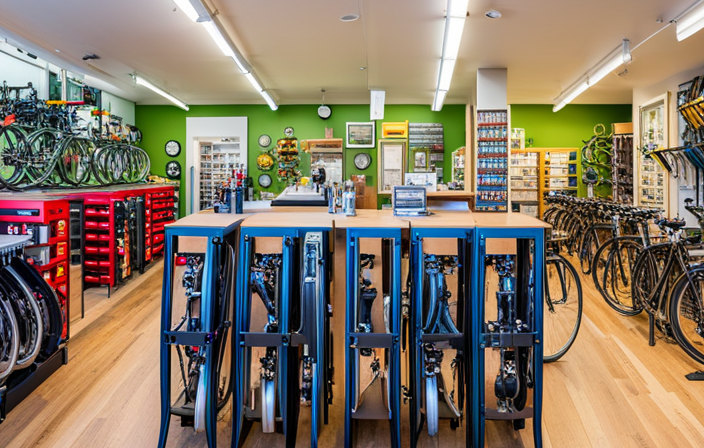
Do you have a bike sitting unused in your garage? Think about the happiness it could bring to someone who could use it.
In this article, I will guide you through various options for donating your used bicycle to make a positive impact in your community.
From local bike shops and nonprofit organizations to community centers and online platforms, there are plenty of places eager to give your bike a new life.
Let’s explore the possibilities together.
Key Takeaways
- Donating used bicycles can support initiatives in low-income neighborhoods, providing affordable transportation options and addressing specific needs.
- Community centers play a role in promoting cycling by offering bicycle repair workshops, conducting cycling classes, organizing group rides, and encouraging healthier lifestyles.
- Donating bicycles to veterans’ organizations can support their reintegration into civilian life, improve healthcare access, enhance employment opportunities, and boost overall well-being.
- Donating bicycles to environmental organizations can have a positive impact by reducing carbon emissions, promoting eco-friendly transportation, supporting sustainable initiatives, and improving the quality of life.
Local Bike Shops
You can donate your used bicycle at local bike shops. Many local bike repair shops participate in bike donation drives, where they collect used bicycles to refurbish and give to those in need.
Donating your bicycle to a local bike shop is a great way to support your community and ensure that your bike gets a second life. These shops often have the expertise and resources to properly assess and fix any issues with your bike before passing it on to someone who needs it.
In addition to helping others, donating your bike to a local shop can also free up space in your garage or storage area. If you prefer to donate to a nonprofit organization, there are plenty of options available as well.
Nonprofit Organizations
Consider checking out nonprofit organizations that accept bicycles as donations. Not only will you be giving your used bicycle a second life, but you may also be eligible for a donation tax deduction. Many nonprofit organizations organize bicycle donation drives to provide transportation to individuals in need and promote a healthy lifestyle. By donating your bicycle, you are contributing to their mission and making a positive impact in your community. To help you choose the right nonprofit organization, here is a table showcasing three reputable nonprofits that accept bicycle donations:
| Nonprofit Organization | Mission | Location |
|---|---|---|
| Bikes for Kids | Providing bicycles to underprivileged children | Nationwide |
| Pedal Power | Empowering individuals through cycling | New York City |
| Wheels of Change | Supporting low-income families with bicycles | Los Angeles |
Consider donating your used bicycle to one of these organizations and continue reading to learn about community bike programs.
Community Bike Programs
One option for giving your bicycle a new life is through community bike programs. These programs not only provide a place to donate your used bicycle but also offer opportunities for others to learn about bike repair and maintenance. Here are three benefits of community bike programs:
-
Bicycle repair workshops: Community bike programs often offer workshops where individuals can learn how to repair and maintain their bicycles. These workshops provide valuable skills and knowledge that can be applied to other bikes in the future.
-
Cycling advocacy groups: Many community bike programs are affiliated with cycling advocacy groups that work to promote cycling as a sustainable and healthy mode of transportation. By donating your bike to these programs, you are supporting their efforts to create more bike-friendly communities.
-
Access to affordable transportation: Community bike programs often refurbish donated bicycles and provide them to individuals in need. By donating your bike, you are helping someone who may not have the means to afford a bike purchase one.
These community bike programs are just one option for donating your used bicycle. Another option is to donate to schools and youth programs, where your bike can be used to teach children about bike safety and provide them with a means of transportation.
Schools and Youth Programs
If you’re looking to give your bike a new purpose, schools and youth programs are a great option to support young riders and promote bike safety. Many schools and after-school programs have sports clubs or recreational activities that involve biking. Donating your used bicycle to these programs can provide children who may not have access to bikes with an opportunity to learn and enjoy the sport. Additionally, it encourages physical activity and outdoor play, promoting a healthy lifestyle among young individuals.
By donating your bike to schools and youth programs, you can make a positive impact on the lives of children in your community.
Now, let’s transition to the next section and explore how donating to homeless shelters can also be a meaningful way to give back.
Homeless Shelters
When you’re thinking about supporting a meaningful cause, homeless shelters are a great option to consider. In addition to providing shelter and basic needs, many homeless shelters are also committed to helping individuals regain their independence and find stable housing. One way they do this is by offering alternative transportation options for homeless individuals.
Bicycle donations play a crucial role in this effort. By donating a used bicycle, you can provide homeless individuals with a means of transportation that is not only affordable but also sustainable. This can have a significant impact on their mobility and independence, allowing them to travel to job interviews, medical appointments, and other essential destinations. Furthermore, having a bicycle can also improve their overall well-being and sense of empowerment.
With increased mobility, homeless individuals have greater opportunities to access resources and improve their circumstances. Transitioning into the subsequent section about ‘refugee resettlement programs,’ it is important to explore how bicycles can benefit individuals in these programs as well.
Refugee Resettlement Programs
Consider supporting refugee resettlement programs by providing transportation options such as bicycles. Bicycles can greatly enhance their mobility and independence. Refugee employment and cultural integration are key aspects of successful resettlement, and having access to bicycles can play a crucial role in both areas.
Bicycles offer a cost-effective and efficient means of transportation. They allow refugees to commute to work, attend language classes, and explore their new surroundings. By donating a used bicycle, you can contribute to the empowerment and self-sufficiency of refugees, helping them integrate into their new communities more effectively.
In addition to providing practical transportation, bicycles also promote physical fitness and mental well-being. They offer a sense of freedom and autonomy, enabling refugees to navigate their new environment with confidence.
Transitioning to the next section, let’s explore how donated bicycles can benefit women’s shelters.
Women’s Shelters
Supporting women’s shelters can provide a safe haven and essential resources for women escaping domestic violence. By donating your used bicycle to a women’s shelter, you can help promote independence and mobility for women in need. Cycling for empowerment is a growing movement that aims to empower women through the use of bicycles. Bicycle advocacy and awareness campaigns have highlighted the numerous benefits of cycling, including improved physical and mental health, increased self-confidence, and access to transportation. Women’s shelters often organize cycling programs as a way for residents to build strength, gain confidence, and develop new skills. By donating your bicycle, you can contribute to these programs and support the empowerment of women in need.
Transitioning into the next section, correctional facilities also benefit from bicycle donations by providing inmates with a means of exercise and transportation.
Correctional Facilities
You can help promote exercise and transportation options for inmates in correctional facilities by contributing a bicycle. Prisoner rehabilitation and prison reform are increasingly focused on providing opportunities for inmates to reintegrate into society successfully. By donating a used bicycle to a correctional facility, you can play a part in supporting these efforts. A bicycle can serve as a valuable tool for inmates, allowing them to engage in physical activity, improve their physical fitness, and develop a sense of responsibility and independence. In addition, it can provide transportation options for inmates upon their release, helping them to access employment, education, and other essential services. By supporting prisoner rehabilitation and prison reform, you contribute to creating a more inclusive and rehabilitative justice system. Transitioning to the subsequent section about ‘veterans’ organizations,’ let’s explore how your bicycle donation can make a difference in the lives of veterans.
Veterans’ Organizations
Transitioning to the subsequent section about veterans’ organizations, let’s see how a bicycle donation can positively impact the lives of veterans.
Donating a used bicycle to a veterans’ organization can have a significant impact on their healthcare and employment opportunities. Many veterans face challenges when it comes to accessing healthcare services, and having a bicycle can help them commute to medical appointments and improve their overall well-being.
Additionally, veterans often struggle with finding employment after their military service. By donating a bicycle, you can provide them with a means of transportation to job interviews or work, increasing their chances of securing employment and reintegrating into civilian life.
The simple act of donating a bicycle can make a big difference in the lives of veterans, helping them improve their healthcare and employment prospects.
Moving on to the subsequent section about ‘bike share programs,’ let’s explore another way bicycles can benefit our communities.
Bike Share Programs
I’ve explored how veterans’ organizations can be a great option for donating a used bicycle. Now let’s shift gears and talk about bike share programs. These programs have gained popularity in cities across the country, offering a convenient and environmentally friendly way to get around.
Bike share programs provide numerous benefits, such as promoting physical activity, reducing traffic congestion, and improving air quality. By donating your used bicycle to a bike share program, you’re contributing to these positive outcomes. However, these programs also face challenges, like maintenance costs, bike theft, and limited accessibility in certain areas.
To delve deeper into the topic, here are three subtopics to consider:
- Funding sources for bike share programs
- Strategies to prevent bike theft in bike share systems
- Expanding bike share programs to underserved communities
Now, let’s transition into the next section about environmental organizations, where you can make an impact in another way.
Environmental Organizations
Environmental organizations offer a variety of opportunities to support conservation efforts and make a positive impact on the planet. One way they do this is by promoting sustainable transportation, such as biking. By donating your used bicycle to an environmental organization, you can help further their mission of reducing carbon emissions and promoting eco-friendly modes of transportation.
These organizations often have programs in place to distribute donated bicycles to individuals in need, especially in low-income neighborhoods. By providing access to bikes, they not only support sustainable transportation but also empower individuals to improve their quality of life.
Moving forward, let’s explore how environmental organizations are involved in low-income neighborhood initiatives and the positive impact they have on these communities.
Low-Income Neighborhood Initiatives
Consider supporting low-income neighborhood initiatives by contributing to environmental organizations. These organizations work towards promoting sustainable transportation and improving the quality of life for individuals in these communities. They often collaborate with local governments and community leaders to address the specific needs of low-income neighborhoods.
By donating your used bicycle, you can support initiatives that focus on providing affordable transportation options for residents who may not have access to reliable public transportation. Environmental organizations also often partner with job training programs to create employment opportunities and help individuals gain the skills they need to secure stable employment.
By supporting these initiatives, you can make a positive impact on both the environment and the lives of individuals in low-income neighborhoods.
Transitioning into the next section about community centers, these organizations also play a crucial role in providing essential services and resources to the community.
Community Centers
If you want to support the community, you can contribute to community centers that provide essential services and resources to residents.
Community centers play a vital role in promoting cycling in the community through their programs and initiatives.
Donating your used bicycle to a community center not only benefits the center but also has a positive impact on the residents.
Community center programs often include bicycle repair workshops, cycling classes, and organized group rides, which help residents learn about bike maintenance, improve their cycling skills, and encourage them to embrace a healthier lifestyle.
By donating your bicycle to a community center, you are directly supporting these programs and helping to promote cycling in the community.
This promotes a sense of community and encourages residents to get involved in charitable thrift stores, where their donations can continue to make a difference.
Charitable Thrift Stores
To support charitable thrift stores, you can contribute by shopping for affordable and unique items that benefit the community. By doing so, you not only get great deals, but also help support various charitable causes. Thrift stores rely on donations to stock their shelves, and your thrift store donations can make a significant impact. Here is a table showcasing some popular charitable thrift stores and the causes they support:
| Thrift Store | Causes Supported |
|---|---|
| Goodwill | Job training, employment services |
| Salvation Army | Homeless shelters, addiction recovery |
| Habitat ReStore | Affordable housing, home repairs |
| St. Vincent de Paul | Emergency assistance, poverty relief |
Donating to thrift stores is a simple yet effective way to give back to the community. Now, let’s explore online platforms for donating bicycles.
Online Platforms for Donating Bicycles
You can easily find online platforms where you can give away your old bicycle to those in need. These platforms offer a convenient and efficient way to connect with individuals or organizations who are looking for bicycles.
One option is to donate your bike for creative reuse. Many artists and artisans use old bicycles as materials for their art projects, giving them a new lease on life. By donating your bike for creative reuse, you are supporting the arts and promoting sustainability.
Another option is to donate your bike for international purposes. Several organizations facilitate the donation of bicycles to developing countries, where they can provide transportation for those who need it most. This not only helps individuals in need but also promotes sustainable transportation in these communities.
Online platforms make it simple to find the right place to donate your bicycle and make a positive impact.
Frequently Asked Questions
Are there any tax benefits to donating a used bicycle?
Yes, there are alternative ways to receive tax benefits for donating used items. In terms of determining the value of a donated bicycle for tax purposes, there are specific guidelines that can help.
How can I ensure that my donated bicycle will be used by someone who truly needs it?
To ensure my donated bicycle goes to someone who truly needs it, I can employ effective donation strategies like contacting local community organizations, shelters, or non-profit groups that specifically focus on providing bikes to those in need. This will have a meaningful impact on recipients’ lives.
Can I donate a bicycle that is in need of repairs?
Yes, you can donate a bicycle that is in need of repairs. Just like a broken wing needing care, these bicycles can be fixed and given to someone in need. Donating bicycles benefits both the recipient and the environment.
Are there any restrictions on the type or condition of bicycles that can be donated?
There are usually no restrictions on the type or condition of bicycles that can be donated. Donations of all types can have a positive impact on the community, regardless of their condition or repair needs.
Is it possible to receive a receipt or proof of donation for tax purposes when donating a bicycle?
Yes, it is possible to receive a receipt or proof of donation when donating a bicycle. This receipt can be used for tax purposes to claim a deduction on your taxes.
Conclusion
In conclusion, there are numerous options available when it comes to donating your used bicycle. Local bike shops, nonprofit organizations, community bike programs, schools, homeless shelters, and charitable thrift stores are all great places to consider.
Additionally, online platforms for donating bicycles can make the process even easier. So, why let your old bike gather dust when it can bring joy and mobility to someone in need?
Take the opportunity to make a positive impact in your community by donating your bicycle today!
Bike
When You Pump A Bicycle Tire, What Is Happening To The Particles Inside The Tire?

Just picture the potential of a bicycle tire pump, as it pressurizes the air within the tire with great strength, turning the tiny particles into a powerful force.
In this article, I will delve into the intricate workings of tire inflation and examine the behavior of these particles when subjected to increased pressure.
We will explore the science behind pumping bicycle tires, uncovering the relationship between air particles, pressure, and ride quality.
Get ready to embark on a journey into the fascinating world of tire physics.
Key Takeaways
- Pumping a bicycle tire increases the pressure inside the tire by causing gas molecules to collide and transfer kinetic energy to the tire walls.
- The increase in pressure also leads to the potential energy of the gas particles increasing as they become tightly packed.
- The process of pumping a tire generates heat due to the energy transfer during compression, which causes air molecules to be forced closer together and results in elevated temperature.
- Understanding the relationship between pressure, heat, and tire performance is crucial as excessive heat can degrade the tire faster, reduce its lifespan, and affect its grip on the road, compromising safety.
The Composition of Bicycle Tires
When you pump a bicycle tire, you are increasing the pressure of the air inside, which is contained within the composition of the tire. To understand this process, we must begin with a composition analysis of the tire.
Bicycle tires are typically made up of several layers. The outermost layer is the tread, which provides grip and traction. Beneath the tread is a layer of rubber, known as the carcass, which gives the tire its strength and flexibility. Inside the carcass, there is a layer of fabric or steel cords, known as the casing, which further reinforces the tire. Finally, the innermost layer is the inner tube, which holds the air.
It is this inner tube that becomes pressurized when the tire is pumped. The role of air pressure in maintaining the tire’s shape and performance will be discussed in the subsequent section.
The Role of Air Pressure
While inflating, the air pressure inside the tire increases. As the pump forces air into the tire, the particles within the tire become more tightly packed together. This increase in air pressure is crucial for maintaining the shape and stability of the tire.
The higher the air pressure, the more resistance the tire has against external forces, such as bumps or uneven surfaces. It also affects the tire’s ability to grip the road, especially in wet or slippery conditions. Proper tire pressure ensures optimal bike handling and performance.
If the tire pressure is too low, it can lead to sluggish handling and increased rolling resistance. Conversely, if the tire pressure is too high, the bike may feel bouncy and unstable. Understanding the relationship between air pressure and tire performance is essential for safe and efficient cycling.
Transitioning into the subsequent section on the introduction to tire inflation, it is important to know how to properly inflate a bicycle tire to achieve the desired pressure.
Introduction to Tire Inflation
To properly inflate your bike tire, it is important to understand the process of tire inflation.
Introduction to tire pressure is crucial in this regard. Tire pressure refers to the amount of air inside the tire, measured in pounds per square inch (PSI). It plays a vital role in determining the performance, comfort, and safety of your ride. Proper tire pressure ensures optimal grip, reduces rolling resistance, and prevents flats.
Factors affecting tire inflation include temperature, load, and riding conditions. As temperature increases, the air inside the tire expands, leading to higher pressure. Similarly, when the load on the tire increases, the pressure also increases. Riding conditions such as rough terrain or high speeds can affect tire pressure as well.
Understanding Boyle’s law, which relates pressure and volume, further enhances our understanding of tire inflation.
Understanding Boyle’s Law
Understanding Boyle’s Law can help you grasp the relationship between pressure and volume in the context of tire inflation. Boyle’s Law states that at a constant temperature, the pressure of a gas is inversely proportional to its volume. This means that as the volume of a gas decreases, the pressure increases, and vice versa.
When you pump air into a bicycle tire, you are increasing the volume of the gas inside the tire, which in turn decreases the pressure. This is why the tire becomes firmer and more inflated. Understanding gas laws, like Boyle’s Law, is crucial in ensuring that the tire is properly inflated and functioning optimally.
Real life applications of Boyle’s Law can be seen in various fields, such as scuba diving and medical equipment.
Transitioning into the subsequent section about the behavior of gas particles, it is important to understand how these particles interact and contribute to the overall properties of the gas.
The Behavior of Gas Particles
The behavior of gas particles is essential in understanding the properties of a gas. According to the kinetic theory, gas particles are in constant motion and have negligible volume compared to the container they are in.
Here are four key points to consider:
- Gas particles move in straight lines until they collide with other particles or the container walls.
- The average kinetic energy of gas particles is directly proportional to the temperature of the gas.
- Gas particles exert pressure on the container walls due to their collisions.
- Gas laws, such as Boyle’s Law and Charles’ Law, describe the relationship between pressure, volume, and temperature of a gas.
Understanding these behaviors is crucial when discussing the process of air compression and volume increase.
Air Compression and Volume Increase
When air is compressed, it causes the volume to increase. This phenomenon, known as air compression, occurs when external pressure is exerted on a gas, causing its particles to move closer together. As a result, the gas becomes denser and takes up less space.
In the case of a bicycle tire, when we pump air into it, the pressure inside the tire increases, leading to air compression. The particles of air inside the tire collide with each other and the walls of the tire, causing them to occupy a smaller volume. This increase in pressure and decrease in volume allows the tire to hold more air, enabling it to stay inflated for a longer period of time.
Understanding the process of air compression is crucial in comprehending the importance of valve systems, which help regulate the flow of air in and out of the tire.
The Importance of Valve Systems
Valve systems are crucial for regulating the flow of air in and out of a tire, allowing for proper inflation and pressure maintenance. Valve maintenance is essential to ensure the valve system functions effectively.
There are different types of valve systems available, including the Schrader valve and Presta valve. The Schrader valve, commonly found on car tires, is robust and easy to use, while the Presta valve, often seen on bicycles, is lighter and more delicate. Understanding the specific valve system on your bicycle tire is important for proper valve maintenance.
Moving forward, it is vital to recognize the role of the pump in maintaining tire pressure. The pump is responsible for exerting force on the air particles inside the tire, causing them to compress and increase in pressure. This pressure increase ensures the tire remains properly inflated, allowing for safe and efficient cycling.
The Role of the Pump
Now that we understand the importance of valve systems in maintaining tire pressure, let’s delve into the role of the pump in this process.
The pump is an essential tool that allows us to add air to the bicycle tire, increasing the pressure inside. The pressure gauge, a crucial component of the pump, helps us monitor and control the amount of pressure we are adding.
There are different types of bicycle pumps available, including hand pumps, foot pumps, and electric pumps, each with their own advantages and limitations. These pumps work by creating a pressure difference between the inside of the pump and the tire, causing air to flow from the pump into the tire. This transfer of air increases the number of particles inside the tire, ultimately leading to a higher pressure.
Moving on to the next section about the transfer of energy…
The Transfer of Energy
The transfer of energy occurs as air is pumped into the tire, increasing its pressure. This energy transfer is a result of the gas behavior inside the tire.
As the pump is used to compress the air, the gas particles are forced closer together, causing an increase in pressure. The gas molecules collide with each other and the walls of the tire, transferring kinetic energy. This kinetic energy is then converted into potential energy as the gas particles become more tightly packed.
This increase in potential energy is what causes the pressure inside the tire to rise. As the pressure increases, the tire becomes more rigid, allowing it to support the weight of the bicycle and rider.
This transfer of energy is a crucial step in the process of inflating a bicycle tire and sets the stage for the subsequent section on heat generation during inflation.
Heat Generation during Inflation
During inflation, heat is generated as a result of the energy transfer that occurs when air is compressed inside the tire. This heat generation is a consequence of the pressure change that takes place during the pumping process. As the air molecules are forced closer together, their kinetic energy increases, leading to an elevation in temperature. To further understand this phenomenon, let’s explore a table that illustrates the relationship between pressure, volume, and temperature.
| Pressure (P) | Volume (V) | Temperature (T) |
|---|---|---|
| Increase | Decrease | Increase |
| Decrease | Increase | Decrease |
This table demonstrates how an increase in pressure leads to a corresponding increase in temperature, while a decrease in pressure results in a decrease in temperature. The heat generated during inflation plays a crucial role in determining the performance of the tire, which will be discussed in the subsequent section.
The Impact on Tire Performance
To understand how this affects your tire performance, let’s explore the impact of heat generation during inflation.
When you pump a bicycle tire, the particles inside experience increased kinetic energy due to the compression of air. This rise in energy leads to heat generation within the tire. The increase in temperature can have significant implications on tire durability and grip.
Excessive heat can cause the tire to degrade faster, reducing its lifespan and overall performance. Additionally, the heat can affect the tire’s grip on the road, potentially compromising safety during rides.
Understanding the impact of heat generation is crucial in maintaining optimal tire performance. Moving forward, it’s important to consider the relationship between tire pressure and ride quality, as we delve into the subsequent section.
The Relationship between Pressure and Ride Quality
When inflating your bike tire, it’s important to understand how pressure impacts the quality of your ride. Tire pressure plays a crucial role in determining the road grip of your bike. The higher the pressure, the better the grip on the road surface. This is because increased tire pressure allows for a larger contact patch between the tire and the road, enhancing traction and stability.
On the other hand, under inflation can have negative effects on tire wear. When a tire is under inflated, it tends to flex excessively, leading to increased heat buildup and accelerated wear. Additionally, under inflated tires have a higher rolling resistance, which can make your ride feel sluggish and reduce overall efficiency.
Understanding the relationship between tire pressure and ride quality is essential for maintaining optimal performance and safety on your bike. Moving forward, it is important to consider the risks associated with overinflation and underinflation.
Overinflation and Underinflation Risks
Be cautious of the risks associated with overinflating or underinflating your bike tires.
Overinflation can lead to a harsh ride and increased risk of tire blowouts. The excessive pressure puts strain on the tire walls, making them more vulnerable to punctures and damage from rough terrain. Additionally, overinflated tires have a smaller contact patch with the ground, reducing traction and compromising control.
On the other hand, underinflated tires can negatively impact ride quality and safety as well. They are more prone to pinch flats and can cause sluggish handling. Moreover, the increased rolling resistance of underinflated tires can make pedaling more difficult.
To avoid these risks, it is crucial to maintain proper tire inflation. Transitioning into the subsequent section about maintenance tips for proper tire inflation, it is essential to regularly check and adjust tire pressure to ensure optimal performance.
Maintenance Tips for Proper Tire Inflation
After discussing the risks of overinflation and underinflation, let’s now focus on some important maintenance tips for properly inflating bicycle tires.
To ensure the best performance and safety, it is crucial to maintain proper pressure in your tires. This can be achieved by using a tire pressure gauge, which allows you to accurately measure the pressure inside the tire.
Here are three key tips to keep in mind:
-
Regularly check your tire pressure using a gauge to ensure it matches the recommended range specified by the manufacturer.
-
Inflate the tires gradually and evenly, avoiding sudden bursts of air that may lead to overinflation.
-
Always refer to the sidewall of the tire or the manufacturer’s instructions for the correct pressure range.
By following these maintenance tips, you can ensure that your bicycle tires are properly inflated and ready for a smooth ride.
Now, let’s delve into the conclusion: the science behind pumping bicycle tires.
Conclusion: The Science Behind Pumping Bicycle Tires
To fully understand the science behind inflating your bicycle tires, it’s important to consider the behavior of air molecules and the impact it has on tire pressure.
When you pump a bicycle tire, you are essentially increasing the number of air molecules inside the tire, which results in an increase in pressure. As you pump, the air molecules are compressed, causing heat generation due to the increase in kinetic energy. This heat can cause the tire to expand slightly, leading to a higher pressure reading on the gauge.
Additionally, the valve mechanics play a crucial role in maintaining the pressure inside the tire. The valve allows air to enter the tire when the pump is attached and prevents air from escaping when the pump is removed.
Understanding these factors is essential for properly inflating your bicycle tires and ensuring optimal performance and safety.
Frequently Asked Questions
Can I use any pump to inflate my bicycle tire?
Yes, any pump can be used to inflate a bicycle tire. When using a pump, air particles are forced into the tire, increasing the pressure inside. This pressure increase results in the tire becoming fully inflated.
How often should I check my tire pressure?
I should regularly check my tire pressure to ensure optimal performance. The recommended pressure for my bicycle tire is crucial for safety and efficiency. Neglecting to do so can result in suboptimal riding conditions.
What happens if I overinflate my bicycle tire?
Overinflating a bicycle tire can have serious consequences and safety hazards. It increases the risk of tire blowouts, reduces traction and control, and puts excessive strain on the tire’s structure, potentially leading to damage or failure.
Why do some bicycle tires require higher pressure than others?
The factors affecting bicycle tire pressure include tire width, rider weight, and terrain conditions. It is important to maintain proper tire pressure to ensure optimal performance, handling, and safety while riding.
Is it normal for my tire pressure to decrease over time even if there are no punctures?
Yes, it is normal for tire pressure to decrease over time even without punctures. Factors affecting tire pressure maintenance include temperature changes, air permeation through the tire, and gradual loss of compressed air.
Conclusion
After exploring the science behind pumping bicycle tires, it becomes clear that the particles inside the tire are subject to the laws of physics.
As air pressure increases, the gas particles become more tightly packed, causing the tire to inflate. Understanding Boyle’s Law helps us comprehend this relationship between pressure and volume.
Maintaining proper tire inflation is crucial for a smooth ride, as overinflation or underinflation can lead to risks.
So, remember to keep those tires properly pumped and enjoy the rhythmic flow of a well-balanced ride.
-

 Electric Bike3 months ago
Electric Bike3 months agoHow To Turn Your Bike Into An Electric Generator
-

 Bike2 months ago
Bike2 months agoAdvantages and Disadvantages of a Carbon Fiber Bike Frame
-

 Beginners Guides2 months ago
Beginners Guides2 months agoA Guide to Right Hybrid Bike Posture: How to Sit on the Bike for Optimal Performance
-
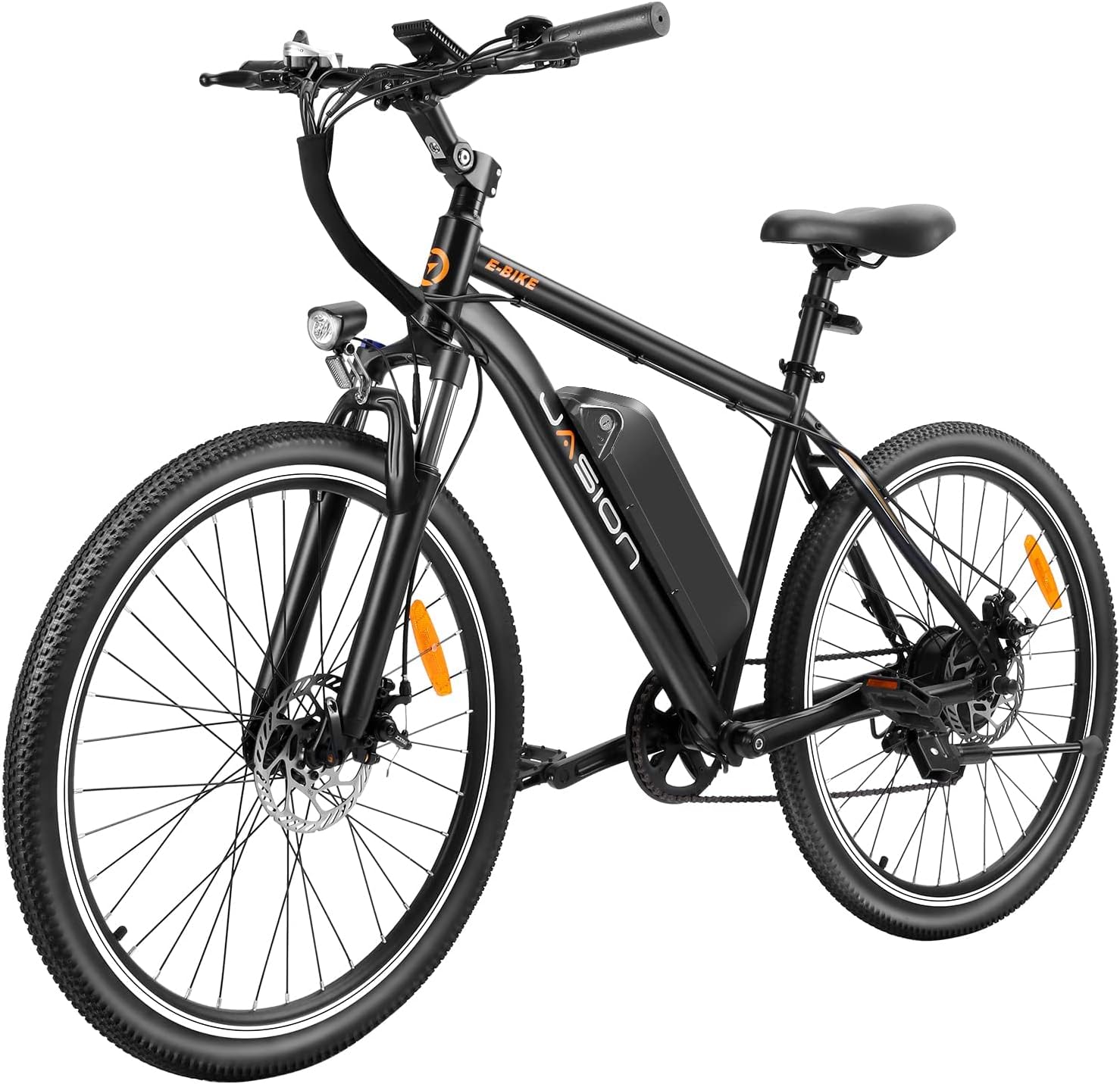
 Vetted3 months ago
Vetted3 months agoJasion EB5 Electric Bike Review: Commute Mountain Bike for Adults
-

 Vetted2 months ago
Vetted2 months ago12 Best Men's Cycling Bib Shorts for Comfort and Performance – Reviewed & Rated
-
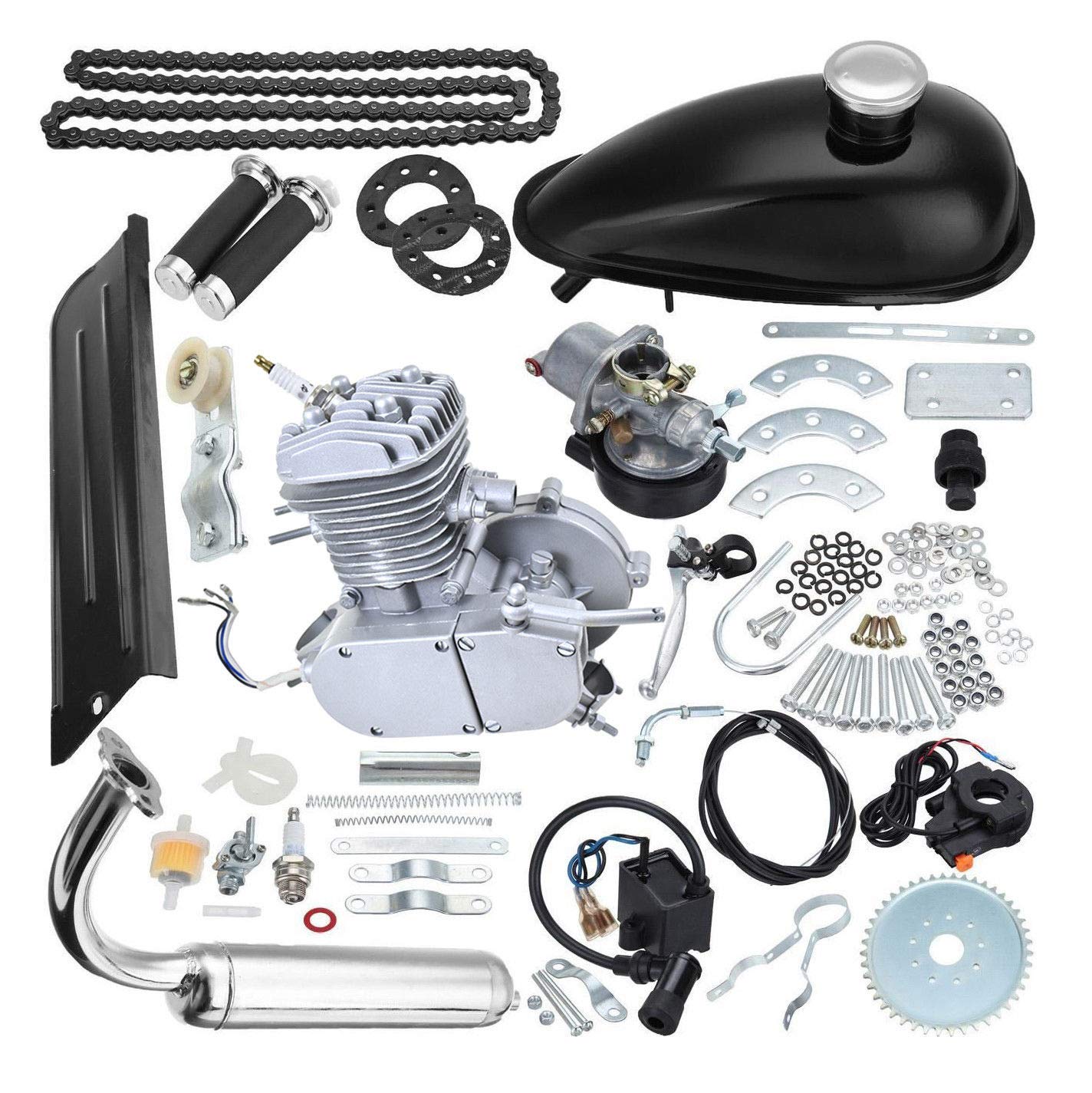
 Vetted3 months ago
Vetted3 months agoReview: 80CC Motorized Bicycle Gas Engine Kit with Performance Carburetor
-

 Beginners Guides2 months ago
Beginners Guides2 months agoWhere Are KTM Motorcycles Made?
-

 Vetted3 months ago
Vetted3 months agoFREESKY Electric Bike Review: 1000W Motor, 48V Battery, Full Suspension




